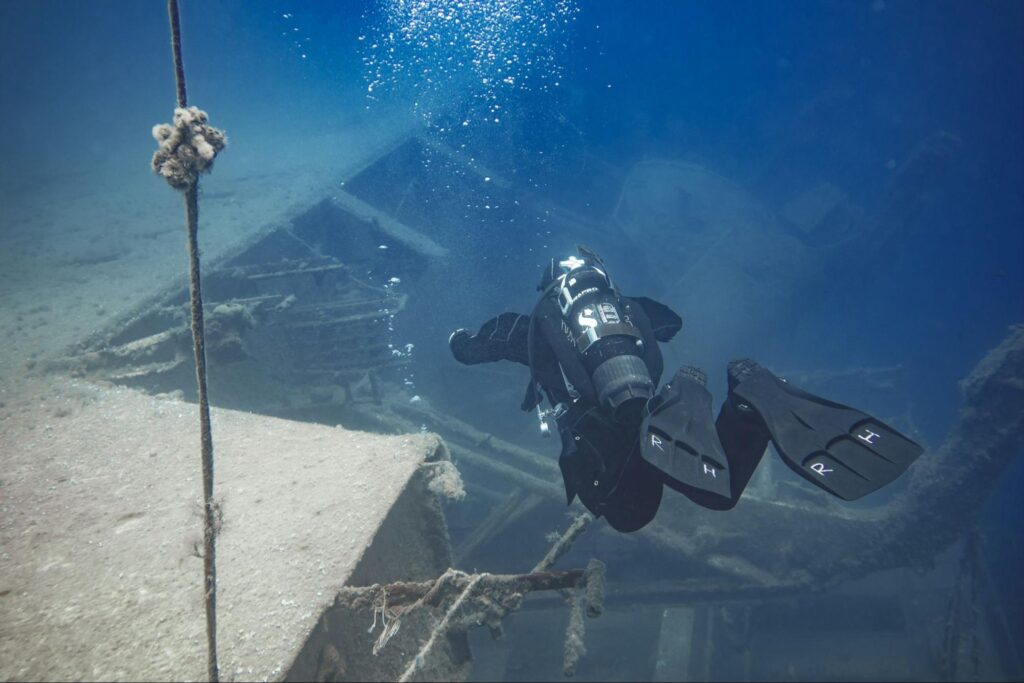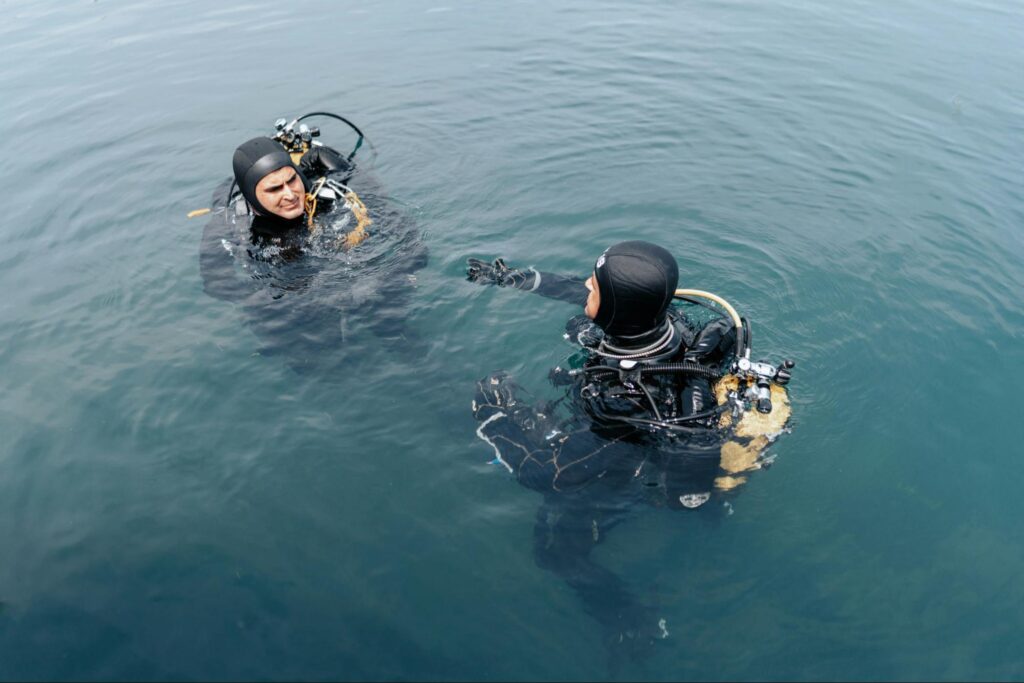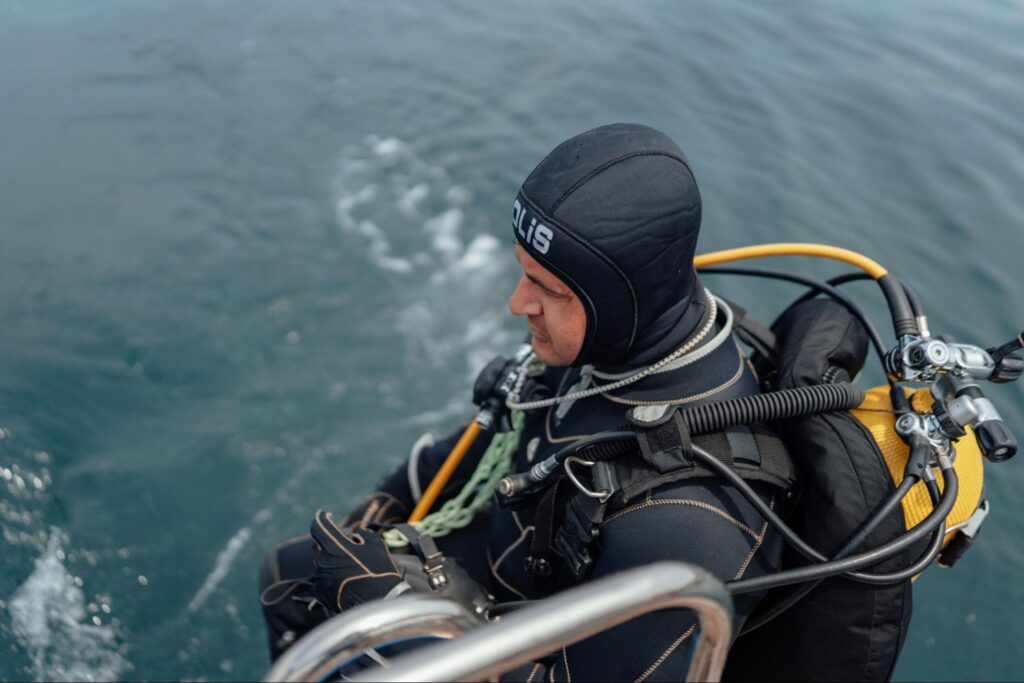In 2007, two professional divers, Tim Crawford and Martin Alvarado, tragically lost their lives during an inspection at the Dos Amigos Pumping Plant in California. The divers were conducting a routine inspection of underwater metal grates in the murky and debris-filled waters of the California Aqueduct when strong currents from a nearby pump swept them toward the infrastructure they were examining. Despite being experienced and equipped with scuba gear, the powerful water currents, coupled with the challenging visibility, created a hazardous situation that led to their deaths.
This tragic incident highlights the inherent dangers of underwater infrastructure inspections, particularly in areas like pumping stations, ports, and dams where strong currents, machinery, and poor visibility create a high-risk environment for divers. It’s a reminder of why industries need to explore safer, more efficient methods for conducting these critical inspections. One promising alternative is the use of marine drones, equipped with Premergy’s advanced battery technology, which offers longer operational times and improved reliability for underwater missions.
Challenges Divers Face in Underwater Inspections
Diving for infrastructure inspection is one of the riskiest jobs in the maritime and industrial sectors. Strong currents, underwater debris, low visibility, and proximity to powerful machinery make these operations hazardous. Furthermore, equipment malfunctions or oxygen depletion can add an additional layer of risk. For instance, in the 2007 incident at the Dos Amigos Pumping Plant, the plant’s powerful pumps exacerbated the unpredictable water currents, leading to the divers being pulled toward the metal grates they were inspecting.
Such inspections are not unique to California; worldwide, ports, dams, pipelines, and other underwater structures need routine evaluations to ensure they are operating efficiently and safely. The dangers of these environments are well-known, but until recently, sending divers was often the only option.
Marine Drones as a Safer Alternative

Photo: Unsplash.com
The advancement of marine drones has revolutionized underwater inspections. Instead of risking human lives, these remotely operated vehicles (ROVs) can navigate underwater environments, using high-definition cameras, sonar, and other sensors to inspect infrastructure with precision. This technology keeps human operators safely onshore while collecting critical data from the underwater world.
However, a fundamental limitation of marine drones has been battery life. Conventional battery systems often require frequent resurfacing for recharging, which can slow down the inspection process. This limitation has made it difficult for drones to be used in larger-scale inspections, such as those at sprawling port facilities or lengthy sections of pipelines.
How Premergy’s Technology Enhances Marine Drones
Premergy’s cutting-edge battery technology is poised to change the game for marine drones, particularly for industries that rely on frequent and thorough underwater inspections. By improving battery efficiency and extending operational time, Premergy’s multi-chemistry battery systems allow marine drones to stay submerged for longer periods, reducing the need for frequent resurfacing to recharge. This extended battery life is crucial for large-scale inspections like those required at ports, pumping stations, and dams.
Premergy’s technology has been independently validated to offer a 20% greater range than traditional battery systems. This means that marine drones equipped with Premergy batteries can inspect larger areas of underwater infrastructure in a single mission, allowing for more comprehensive inspections without the need for human divers.
Additionally, Premergy’s technology features rapid recharging capabilities that have been third-party tested to charge multi-chemistry batteries up to three times faster than conventional battery technology. This reduction in downtime is a critical advantage, particularly in situations where continuous monitoring or inspections are required.

Photo: Unsplash.com
Finally, Premergy’s advanced thermal management system ensures that drones can operate safely, even during longer missions. Underwater environments, especially those near active machinery, can expose drones to significant temperature variations. Premergy’s system helps maintain optimal battery temperatures, preventing overheating and extending the lifespan of the drone’s power systems. This ensures safe and reliable operation, reducing the risk of battery-related failures during missions.
Preventing Future Tragedies with Technology
Had marine drones equipped with today’s cutting-edge technology been available in 2007, the tragic deaths of Tim Crawford and Martin Alvarado may have been avoided. Instead of sending divers into dangerous, debris-filled waters, marine drones could have been deployed to conduct the inspection. These drones would have gathered the same critical data, navigating strong currents and poor visibility conditions without risking human lives.
Furthermore, Premergy’s technology would have allowed for extended, uninterrupted inspections, ensuring the job was completed thoroughly and efficiently without the need for drones to constantly resurface for recharging.
Conclusion

Photo: Unsplash.com
The 2007 incident at the Dos Amigos Pumping Plant serves as a stark reminder of the dangers divers face during underwater inspections. With Premergy’s advanced battery technology, the maritime industry can now conduct these critical inspections more safely and efficiently using marine drones. Premergy’s multi chemistry battery systems offer extended operational times, rapid recharging, and superior thermal management, making them the ideal solution for complex underwater missions. By adopting this technology, industries can ensure that their infrastructure is correctly maintained without risking human lives, marking a new era of safety in underwater inspections.
Published By: Aize Perez



